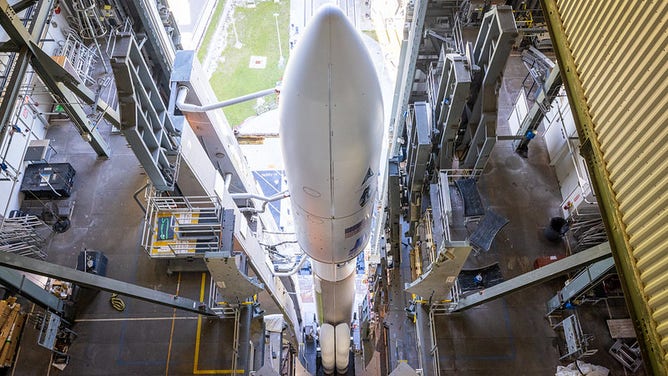ULA launches Space Force mission from Florida
Liftoff happened at 5:19 a.m. ET Tuesday

A United Launch Alliance (ULA) Atlas V rocket with the United States Space Force’s Space Test Program (STP)-3 mission rolls from the Vertical Integration Facility (VIF) to the launch pad at Space Launch Complex-41 at Cape Canaveral Space Force Station, Florida. Photo credit: United Launch Alliance
(ULA)
CAPE CANAVERAL, Fla. – United Launch Alliance successfully launched a U.S. Space Force mission after repairing a fuel leak that delayed the liftoff over the weekend.
An Atlas V rocket launch Tuesday at 5:19 a.m. ET from Cape Canaveral Space Force Station delivering the Space Test Program-3 (STP-3) mission into orbit for the U.S. Space Force’s Space Systems Command.
The countdown was briefly put on hold Tuesday morning due to wind conditions. The 45th Weather Squadron released weather balloons to measure the speed and direction of upper-level winds before the rocket got off the ground near the end of the 120-minute launch window.
The Atlas V rocket rolled out to the launchpad for a launch attempt Saturday, but liftoff was delayed after a fuel leak was discovered in the ground storage system.
ULA said Monday teams repaired the leak. Engineers needed additional time to test the fuel pushing the launch to Tuesday morning.
The Atlas V has a long flight path to deliver its payloads. The rocket's second stage will take more than seven hours to get the spacecraft into geosynchronous orbit, 22,000 miles above Earth.
Around 11 a.m. the rocket's Centaur rocket engine was close to restarting to finish the orbital insertion.
"This is a highly complex orbital insertion that requires three Centaur burns and precise navigation, a capability unique to the Atlas V. This is our longest mission to date at seven hours and 10 minutes until final spacecraft separation," ULA vice president of Government and Commercial Programs Gary Wentz said in a blog post.
STP-3 is a technology demonstration mission with payloads for NASA and the U.S. Naval Research Laboratory and the U.S. Space Force.
One of those technologies is NASA's Laser Communications Relay Demonstration, or LCRD. NASA currently uses radio frequency communications to send data to and from a spacecraft. LCRD will test optical communications using infrared lasers that transmit data to and from Earth.
According to NASA, optical communications "will provide significant benefits for missions, including bandwidth increases of 10 to 100 times more than radio frequency systems." This method also requires less space on a satellite meaning more room for science instruments on a spacecraft.
Another payload is a joint NASA and U.S. Naval Research laboratory experiment designed to study the origins of the sun's most dangerous form of radiation, solar energetic particles.